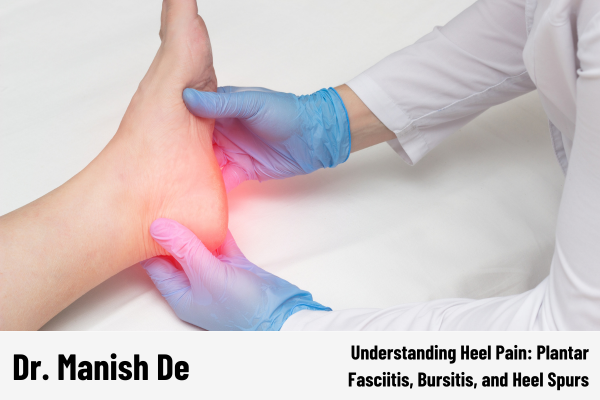Heel pain can be debilitating, affecting your ability to walk and perform daily activities. As a leading pain management specialist in Kolkata, Dr. Manish De offers expert insights into three common causes of heel pain: plantar fasciitis, bursitis, and heel spurs.
Plantar Fasciitis is the most frequent cause of heel pain. It involves inflammation of the plantar fascia, a thick band of tissue that runs across the bottom of your foot, connecting the heel bone to the toes. Symptoms include stabbing pain near the heel, especially noticeable with the first steps in the morning. Treatment typically involves stretching exercises, orthotics, and in some cases, corticosteroid injections.
Bursitis occurs when the bursae, small fluid-filled sacs that cushion the bones, tendons, and muscles near the joints, become inflamed. In the heel, this often affects the retrocalcaneal bursa located at the back of the heel. Symptoms include swelling, warmth, and pain that worsen with activity. Management strategies include rest, ice, anti-inflammatory medications, and physical therapy.
Heel Spurs are bony growths that develop on the underside of the heel bone. They are often associated with plantar fasciitis and can cause similar pain. However, heel spurs can also be present without causing any symptoms. Treatment may involve similar approaches to plantar fasciitis, along with specific measures to reduce pressure on the heel.
Understanding the nuances of these conditions is crucial for effective treatment. If you’re experiencing persistent heel pain, consulting a pain management specialist like Dr. Manish De in Kolkata can provide you with a tailored treatment plan to alleviate your discomfort and improve your quality of life.


